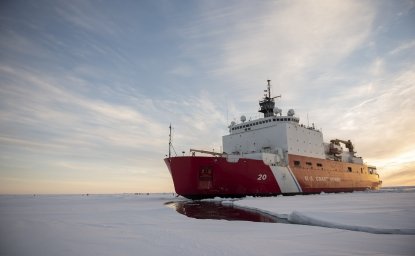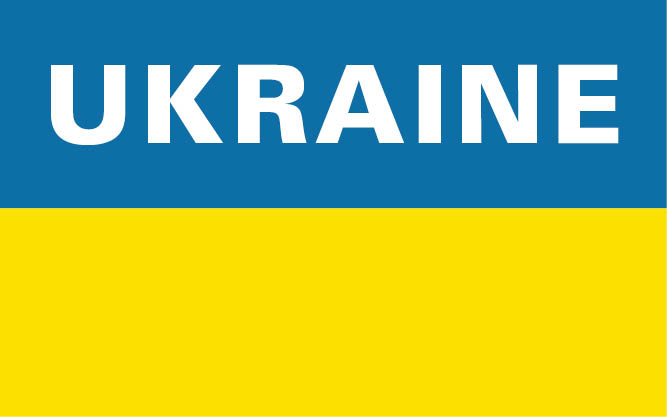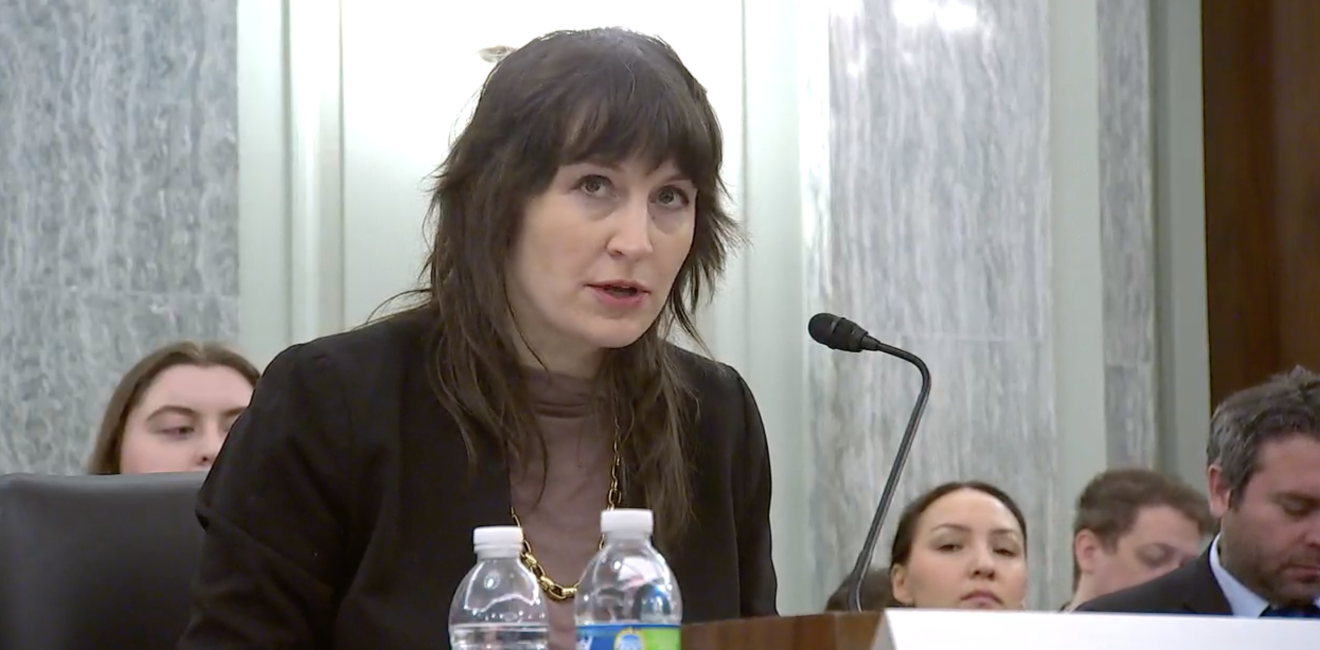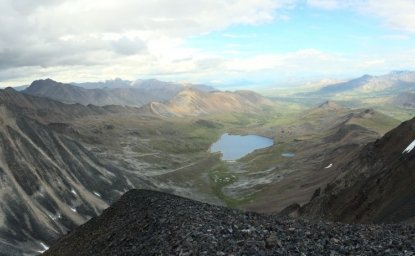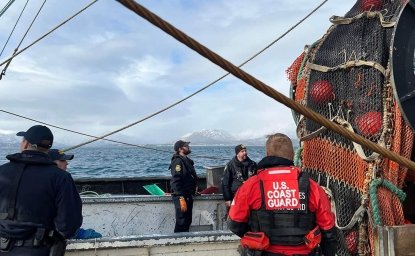Written Testimony of Dr. Rebecca Pincus Director, Polar Institute, Wilson Center Committee on Commerce, Science, and Transportation US Senate February 12, 2025
Nuuk and Cranny: Looking at the Arctic and Greenland’s Geostrategic Importance to US Interests
Introduction
Chairman Cruz, Ranking Member Cantwell, and distinguished members of the Committee, thank you for convening this hearing on the Arctic and Greenland’s geostrategic significance to the US I am Dr. Rebecca Pincus and I am honored to appear before you today as the Director of the Wilson Center’s Polar Institute to discuss these issues.
Prior to directing the Polar Institute, I served on the faculty of the US Naval War College, in the Center for Naval Warfare Studies. From 2020-2022, I was detailed from the Naval War College to the Office of the Secretary of Defense for Policy, first to the Deputy Assistant Secretary of Defense for Strategy and Force Development office and later the newly established Deputy Assistant Secretary of Defense for Arctic and Global Resilience. Before joining the Naval War College, I served on the faculty of the US Coast Guard Academy, and led research for the Coast Guard’s Center for Arctic Study and Policy.
Woodrow Wilson Center’s Polar Institute
The Polar Institute was established as a program within the Woodrow Wilson International Center for Scholars in 2017. Since then, it has become a premier forum for discussion and policy analysis of Arctic and Antarctic issues. The Polar Institute studies the central policy issues facing these regions, with an emphasis on foreign policy, economic development, security and defense, and scientific research. Our nonpartisan analysis and findings are communicated to policymakers and other stakeholders.
We do this work within the administrative context of the Wilson Center, which was chartered by Congress in 1968 as the official memorial to President Wilson. The Wilson Center is Congress’s only non-partisan policy forum for tackling global issues through independent research and open dialogue to inform actionable ideas for the policy community.
The Arctic and Greenland’s Importance to US Interests
In keeping with the nonpartisan, policy-focused work of the Wilson Center, I offer the following comments on US strategic interests in Greenland. By placing Greenland in the context of US national interests and objectives in the Arctic and beyond, I will underscore the significance of Greenland and the Arctic region, and the importance of its consideration by this Committee.
In brief, I offer three major points: first, that Greenland has enduring national security and homeland defense significance to the US by virtue of its geographical position; second, that the disposition of Greenland’s mineral resources has the potential to affect US economic security, but that Greenland has other economic strengths; and third, that Greenland’s significance is best understood in the context of the Arctic region, which is itself a growing zone for geopolitical competition.
1. Greenland is important to US national security
Greenland, an island roughly three times the size of Texas, straddles the Arctic and North Atlantic Oceans. Its strategic position on the North Atlantic sea lanes of communication (SLOCs) has given it military significance since World War II1 .
The US began building the Thule Air Base in northwest Greenland in 1951: since then, this base has served as a vital node in US nuclear strategy2. In its early years, the base was an important location from which aircraft could be launched for both early warning/reconnaissance missions against the Soviet Union, as well as nuclear response. Thule also served as an important forward location for radar defense systems that point northwards, across the Arctic, to provide early warning of incoming missile launches against the US. In 2020, Thule Air Base was transferred to the US Space Force, and in 2023 it was renamed Pituffik Space Base in recognition of its historic Inuit name. Today, Pituffik Space Base is critical to space domain awareness and surveillance, missile defense, and early warning3. The base includes a satellite tracking station and a solid-state phased array radar system, as well as a 10,000-foot runway and deepwater port. It could support power projection and forward defense into and around the Arctic if necessary.
Greenland is a critical forward location to US missile defense. While the overall nature of this threat is a function of geography, at present it creates a vulnerability for the US due to new missile threats and a decline in relative US military position. Across the Arctic, the US confronts two serious adversaries with significant abilities to hold the US homeland at risk from land and/or sea-based attacks.
Greenland provides the westernmost location for monitoring Russia’s naval activities in the Arctic and North Atlantic, since it sits at one end of the GIUK (Greenland-Iceland-UK) Gap, a strategic corridor.
Greenland’s longstanding importance to US homeland defense and securing northern approaches is heightened by today’s increasing activity by US competitors, and the prospect of increasing accessibility throughout the Arctic. The US military has a significant position in Alaska, including the world’s largest concentration of 5th -generation fighter aircraft and the 11th Airborne. Greenland’s location on the eastern side of the Arctic complements Alaska—they are the “10 o’clock and 2 o’clock” of the North American continent—and together, homeland defense and domain awareness from these positions offers critical protection to the US. Robust capabilities and shored-up presence on both sides of the continent are important to protect the US from threats across the northern hemisphere, from space to the sea floor. This includes a robust layered missile defense and space-based missile sensor capability.
The US military presence in Greenland is accomplished via the 1951 Defense of Greenland agreement signed by Denmark and the US, which was subsequently refined in 2004 with the Igaliku Declaration4. US presence is also covered by the NATO Status of Forces Agreement (SOFA).
2. Greenland is an important part of the global competition over minerals
Greenland has a rich endowment of minerals, including rare earths, platinum metals, uranium, and more5. Most of these resources are as yet undeveloped due to several significant complicating factors: the foremost challenge is the harsh Greenlandic climate and lack of infrastructure, which significantly raise development costs.
One plausible pathway to Greenland’s independence lies through development of its natural resources, revenue from which could replace the current Danish block grant. Since Greenland’s minerals do not compete well on the open market, given the extra costs discussed above, this pathway may require some nonmarket intervention.
In addition to minerals and metals, Greenland may have valuable hydrocarbon deposits on and offshore, although thorough mapping is not yet complete.
Greenland’s enormous energy potential is often overlooked: the island has virtually unlimited hydropower around the ice sheet6. Its hydro potential is very high quality, and offers the potential to co-locate energy-intensive industrial facilities in the Icelandic model. The cold climate in Greenland would make data centers another efficient choice, although this would require a fast-fiber connection to the US.
Tourism is another significant area for growth: with direct flight connections to the US beginning in 2025, Greenland is becoming significantly more accessible. Starting this summer, United Airlines will offer direct flights just over 4 hours long from Newark to Nuuk7. With tourism arrivals expected to double, in the face of significant limitations on hotel availability and other support infrastructure, there is both a tremendous economic opportunity as well as need for strategic investment and development planning8.
In summary, while Greenland’s minerals receive the most global attention, its most likely economic development pathway would parallel the Icelandic model, with revenue streams from tourism, energy-intensive industry, and fisheries as primary economic drivers. Iceland does not have a military, relying instead on the NATO alliance, and a similar arrangement could be expected in Greenland.
3. Greenland is a part of geopolitical competition in the Arctic
In addition to a better understanding of Greenland and its significance to the US, I welcome this Committee’s attention to the growing importance of the Arctic region. The Arctic region is about 5 and a half million square miles, including one of the world’s oceans, and includes the territory of 8 sovereign nations, including the US. It is home to 4 million people. The US has vital interests in the Arctic region, across all dimensions of national interest: we have lands and waters in the Arctic; we have citizens living there; we have critical national security and defense interests, compelling economic interests, and important interests relating to science.
The Arctic region is of global importance, and therefore is increasingly subject to global competition. The region holds significant natural resources, including minerals, hydrocarbons, and fish. Potential emerging shipping lanes across the Arctic, including the Northern Sea Route across Russia’s coast and the Northwest Passage, are drawing increasing interest as ice coverage declines. Russia has enormous security and economic interests in the region. China also has interests in the Arctic.
The Arctic is also important to the space domain. Polar and near-polar orbits provide unique and valuable satellite views9. For example, sun-synchronous orbits allow a satellite to pass over the same location at the same time each day, providing valuable imagery. The importance of polar and near-polar orbits can be seen in the number of high-latitude satellite ground stations operated by the US, China, Russia, and others in the Arctic. In addition, harsh Arctic conditions are being used to help us prepare for Mars exploration—Canada's Devon Island, lying across Baffin Bay from Greenland, hosts two major Mars-analogue sites, including NASA’s Haughton Mars Project.
Put more simply, the Arctic has both intrinsic and strategic economic importance: specific resources with economic value, and also scientific/information value to the space domain. Both polar regions are critical to earth sciences, as well as space exploration. The Arctic and Antarctica hold symbolic value as well: not many states are present, much less powerful, at the very ends of the earth.
The US established itself as the dominant polar power through significant effort and investment at the peak of the Cold War. By asserting itself as the leading presence and superpower in the polar regions, the US deterred the Soviet Union. Large bases and research stations anchored US leadership. Presence and influence were enabled by polar icebreakers, ski-equipped C-130s, and other key platforms and capabilities. In 1970, President Nixon underlined the importance of the US “maintaining an active and influential presence in the Antarctic,” in support of scientific, economic, and political objectives10. Nixon’s actions reflected the clear connection between presence and influence. In the 1970s, investment in polar presence and capabilities was recognized to be a wise use of resources to wage the global war against Communism.
Today, the effort that went into building US leadership in the poles is at risk. The US is at a weak point in the Arctic: investments made in the 1970s are rusting away, and the US faces a new and more complex global competition. Without a fresh wave of investment, the US will face severe limitations on its presence in the poles, and could soon lose its influence and dominant position.
In particular, the POLAR STAR and HEALY were great ships in their day, but the STAR is now 52 and the HEALY 28. The US’s 10 ski-equipped LC-130s were built in the early 1970s, and are all now 50 years or older. These capabilities are approaching the end of their operational lives.
These weaknesses are apparent, and it is not surprising that US competitors are leveraging the symbolic value of polar capabilities and operations to apply pressure at a US weak point in the region. For example, China has leveraged its world-leading shipbuilding capacity to build a small fleet of research icebreakers, including the XUE LONG 2, the JI DI, and the TAN SOU SAN HAO11.
In conclusion, I thank the Chair and Committee for your attention to this important and timely issue set, and welcome your engagement. Greenland and the Arctic are important to a broad array of US national interests. The Polar Institute stands ready to support Congress’s efforts through our research and analysis
- <a href="https://www.americanrifleman.org/content/greenland-and-the-strategic-advantage-of-weather-reporting/">”Greenland and the Strategic Advantage of Weather Reporting.”</a>
- For additional background, see “From bilateral to trilateral agreement: the case of Thule Air Base.” Maria Ackren, Arctic Yearbook 2019. <a href="https://issuu.com/arcticportal/docs/ay2019">https://issuu.com/arcticportal/docs/ay2019</a>
- “Pituffik Space Base, Greenland.” Peterson and Schreiver Space Base, U.S. Space Force. <a href="https://www.petersonschriever.spaceforce.mil/Pituffik-SB-Greenland/">https://www.petersonschriever.spaceforce.mil/Pituffik-SB-Greenland/</a>
- “Agreement between the United States of America and Denmark Amending and Supplementing the Agreement of April 27, 1951.” U.S. Department of State (2004). Treaties and Other International Acts Series 04-806. <a href="https://www.govinfo.gov/app/details/GOVPUB-S-PURL-gpo13927">https://www.govinfo.gov/app/details/GOVPUB-S-PURL-gpo13927</a>
- For more information, see “Review of the critical raw material resource potential in Greenland.” Geological Survey of Denmark and Greenland (2023). <a href="https://doi.org/10.22008/gpub/32049.">https://doi.org/10.22008/gpub/32049.</a>
- For more information, see “Data and Reports” on Greenland Hydropower Resources, Government of Greenland. <a href="https://hydropower.gl/emner/data-and-reports?sc_lang=en.">https://hydropower.gl/emner/data-and-reports?sc_lang=en.</a>
- See United, “Flights from New York to Greenland.” <a href="https://www.united.com/en-us/flights-from-new-york-togreenland.">https://www.united.com/en-us/flights-from-new-york-togreenland.</a>
- “Air Greenland’s CEO on Expansion in a Changing World.” Aviation Week (2025). <a href="https://aviationweek.com/podcasts/window-seat-podcast/podcast-air-greenlands-ceo-expansion-changing-world.">https://aviationweek.com/podcasts/window-seat-podcast/podcast-air-greenlands-ceo-expansion-changing-world.</a>
- “Ever Forward: The Unique Relationship between the Arctic and Space.” David Marsh, Polar Institute, Wilson Center (2024). <a href="https://www.wilsoncenter.org/blog-post/ever-forward-unique-relationship-between-arctic-and-space.">https://www.wilsoncenter.org/blog-post/ever-forward-unique-relationship-between-arctic-and-space.</a>
- National Security Decision Memo 71: United States Antarctic Policy and Program. (1970). Richard Nixon Presidential Library and Museum. <a href="https://www.nixonlibrary.gov/national-security-decision-memoranda-nsdm.">https://www.nixonlibrary.gov/national-security-decision-memoranda-nsdm.</a>
- For more, see <a href="https://gcaptain.com/china-delivers-arctic-capable-research-vessel-expanding-polar-presence/">"China Delivers Arctic-Capable Research Vessel, Expanding Polar Presence.”</a> by Mike Schuler and <a href="https://gcaptain.com/china-dispatches-three-icebreakers-to-arctic-us-suffers-healy-fire/">“China Deploys Three Icebreakers to Arctic as U.S. Presence Suffers After ‘Healy’ Fire.”</a> by Malte Humpert, both in gCaptain, (2024).

Polar Institute
Since its inception in 2017, the Polar Institute has become a premier forum for discussion and policy analysis of Arctic and Antarctic issues, and is known in Washington, DC and elsewhere as the Arctic Public Square. The Institute holistically studies the central policy issues facing these regions—with an emphasis on Arctic governance, climate change, economic development, scientific research, security, and Indigenous communities—and communicates trusted analysis to policymakers and other stakeholders. Read more

Explore More
Browse Insights & Analysis
Polar Institute Reading List
